Background:
The last post discussing the tuning of the Shuenk IS48 turbocharger addressed the effort to push the compressor into surge by rapidly increasing the target boost pressure at low engine speeds.
With that behind me, I turned to increasing the boost pressure at the top end, approaching the redline, to learn how the turbocharger wastegate duty cycle would respond.
Russell Road and Racing provided me with two new tunes for this experiment.

Revision 3:
The third revision of the tune was the first version specifically aiming to increase the top-end boost pressure.
The outside air temperature during this session fell between the temperatures during the previous two sessions.
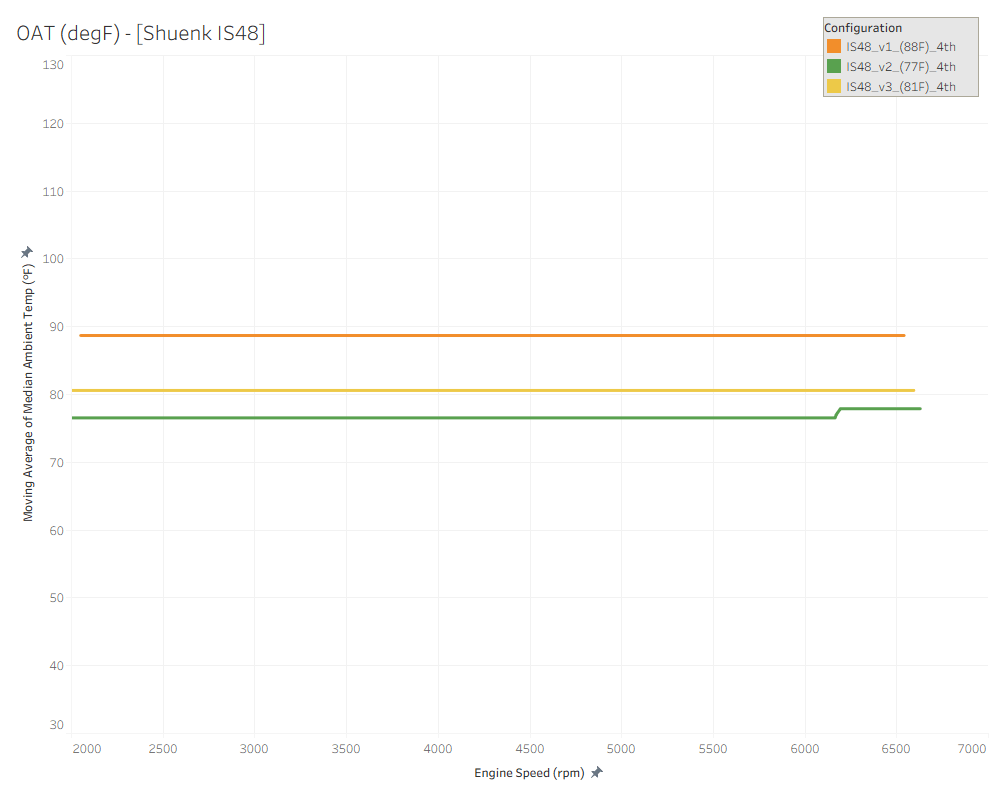
Likewise, the intake air temperature was between the two prior sessions.
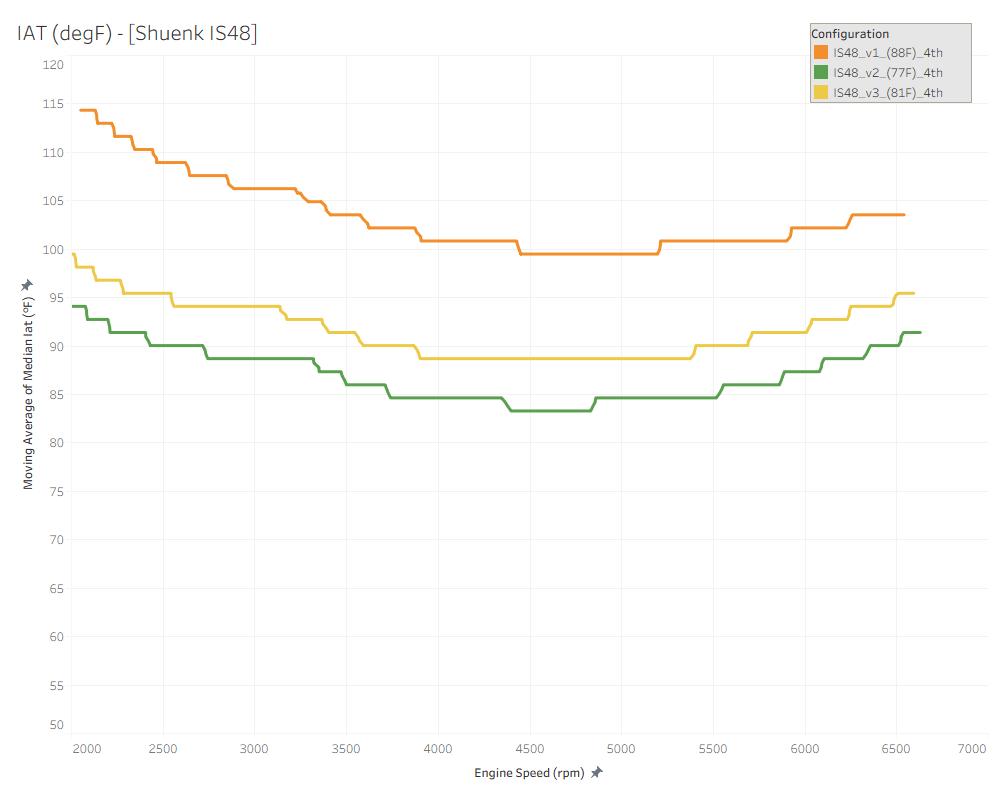
The boost pressure increased slightly after 5,200 RPM, which was the intended result of this revision.
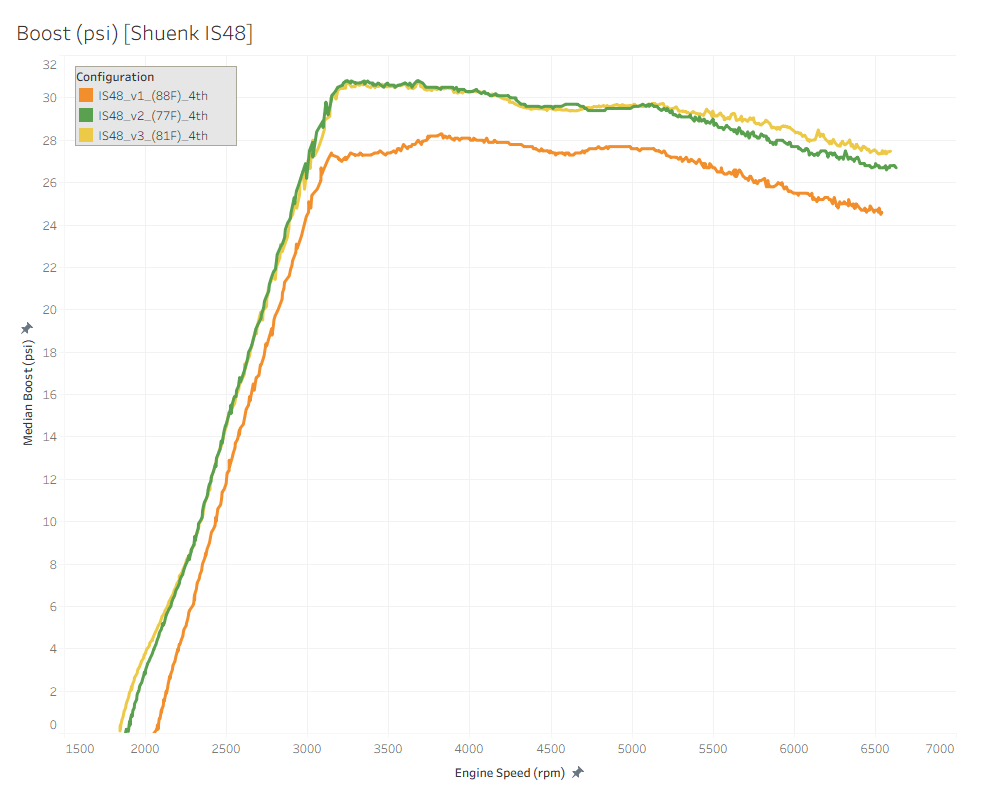
The turbocharger wastegate duty cycle has increased by a couple of percent.
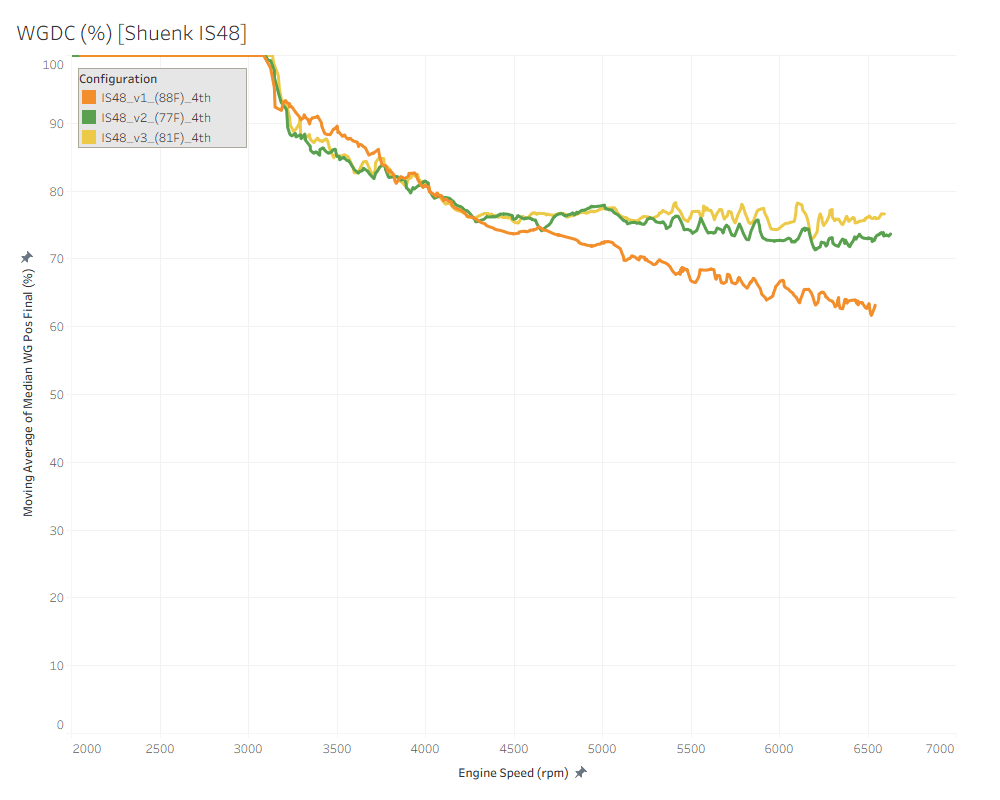
The rate of acceleration was nearly the same as with the previous tune.
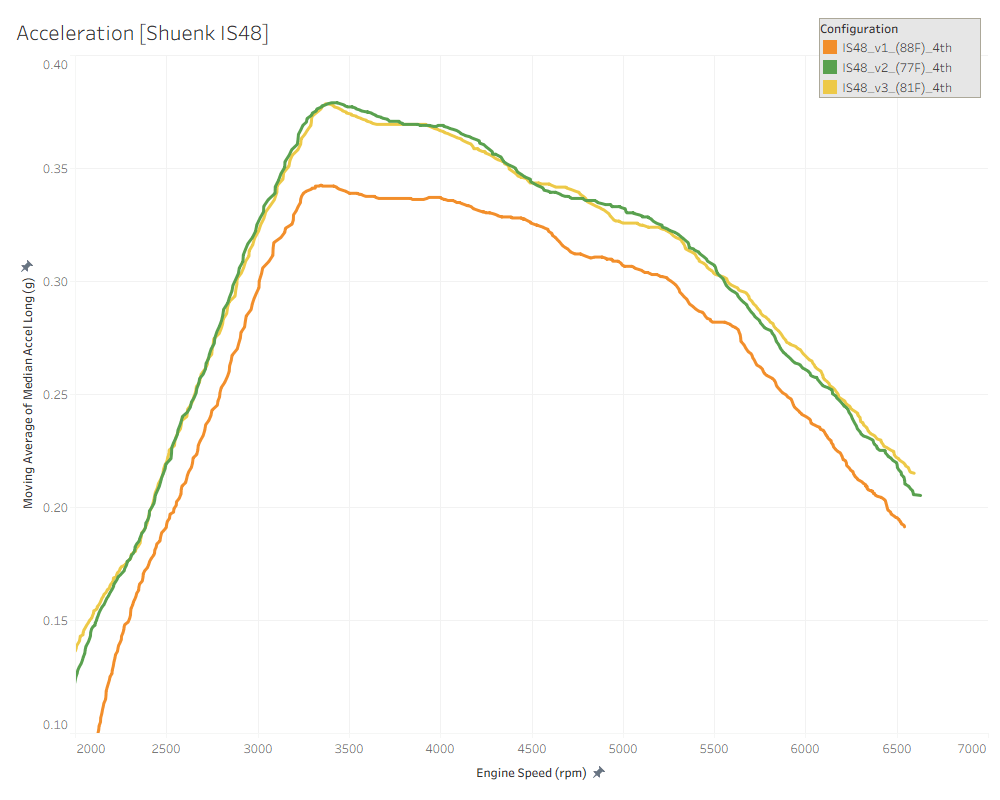
The output from Virtual Dyno was also very similar.
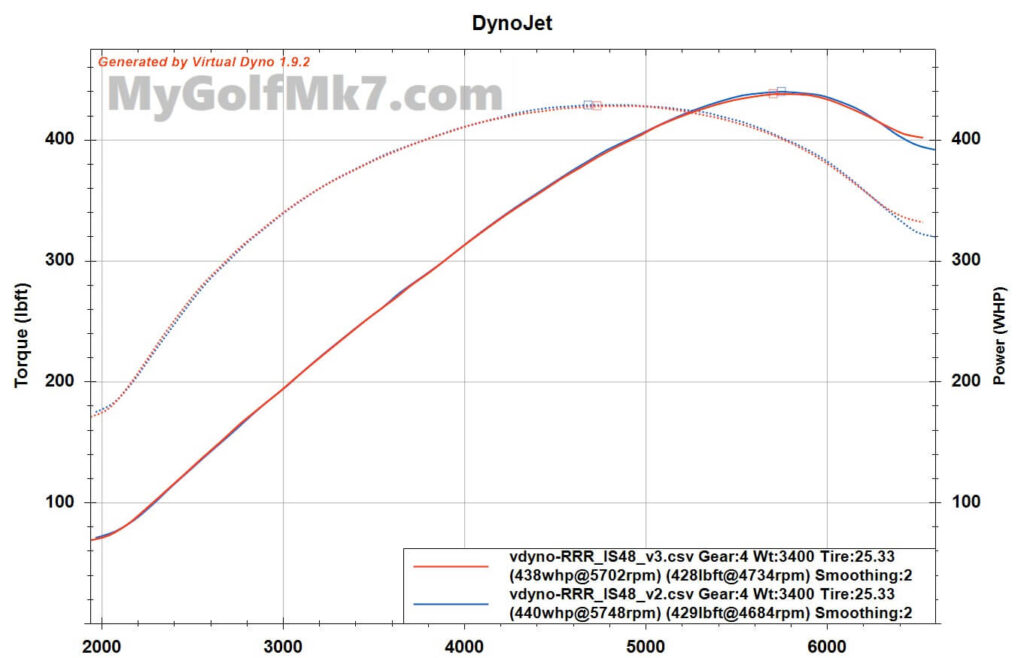
A look at some of the air temperatures shows that the compressor outlet temperature peaks around 365°F when the pull ends.
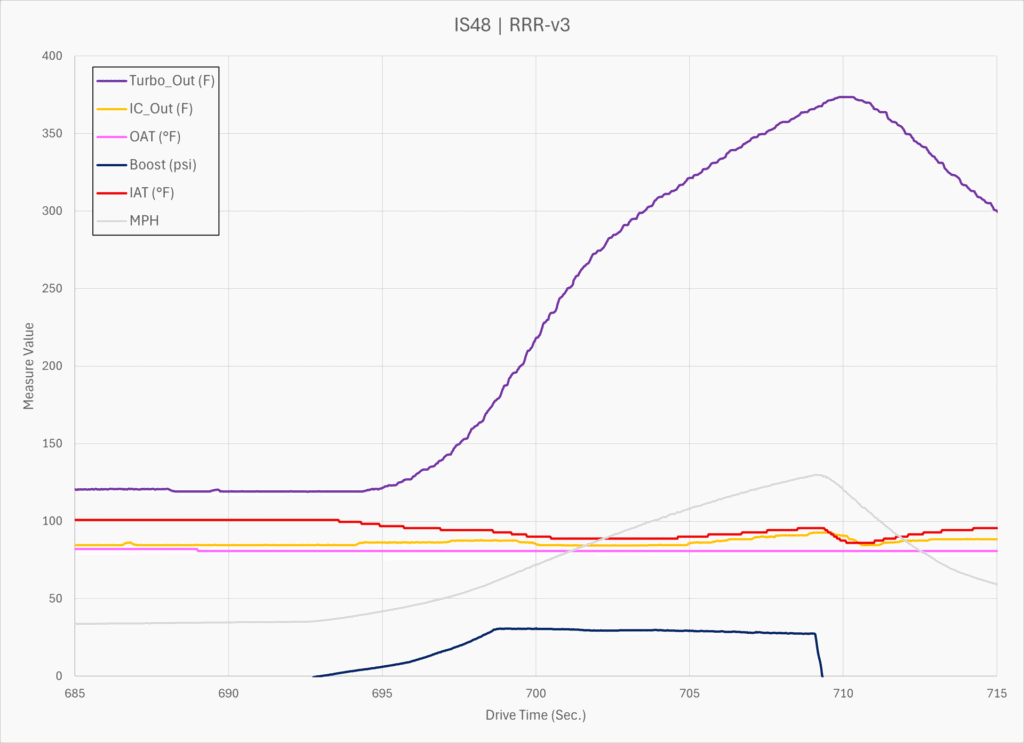
Revision 4:
Plotting the change in wastegate duty cycle versus boost pressure reveals a strong linear correlation.
I decided that 85% WGDC would be a good target, which could potentially generate around 30 psi at 6,500 RPM.
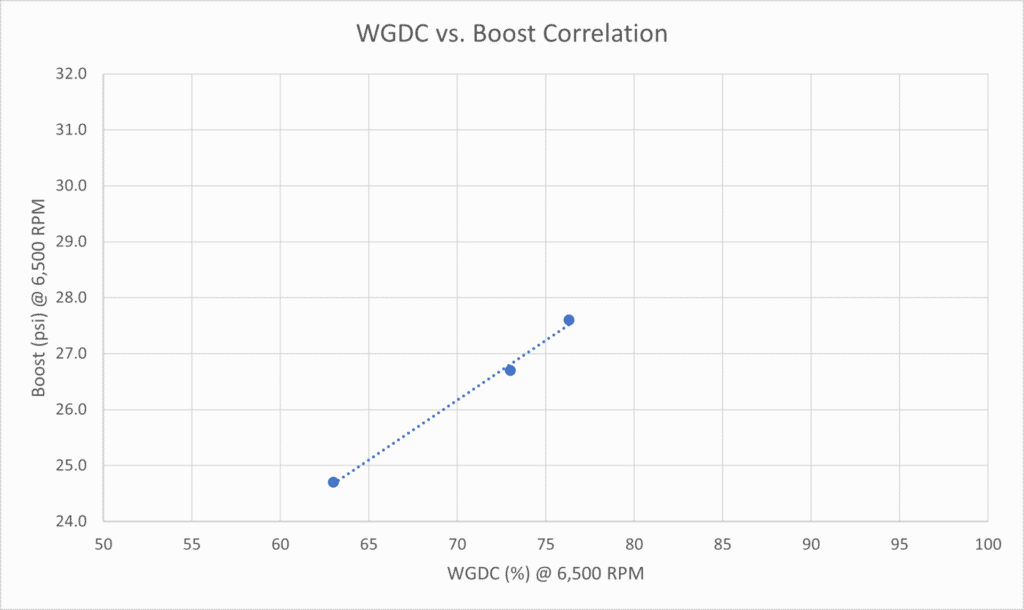
Russell Road and Racing revised the tune to make around 30 psi, and I went out to log this 4th revision.
The ambient air temperature was higher this time, 87 degrees Fahrenheit.
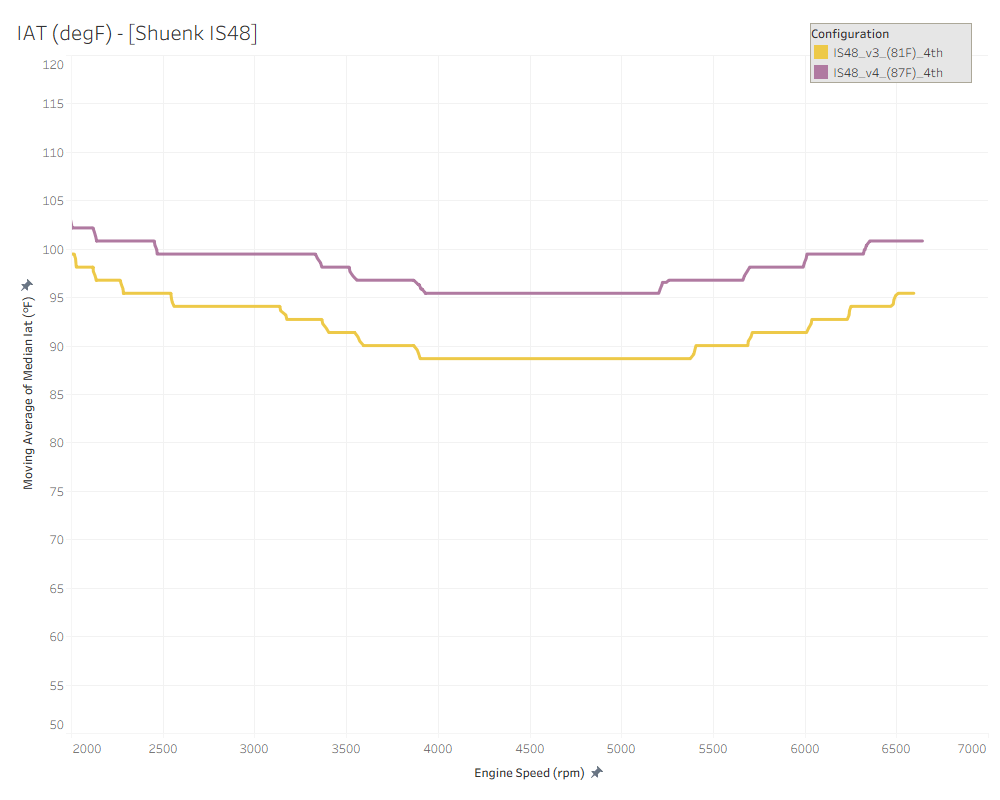
Boost pressure rose slightly more, to approximately 29.5 psi, and remained relatively constant from 4,500 RPM until I let off the throttle around 6,700 RPM.
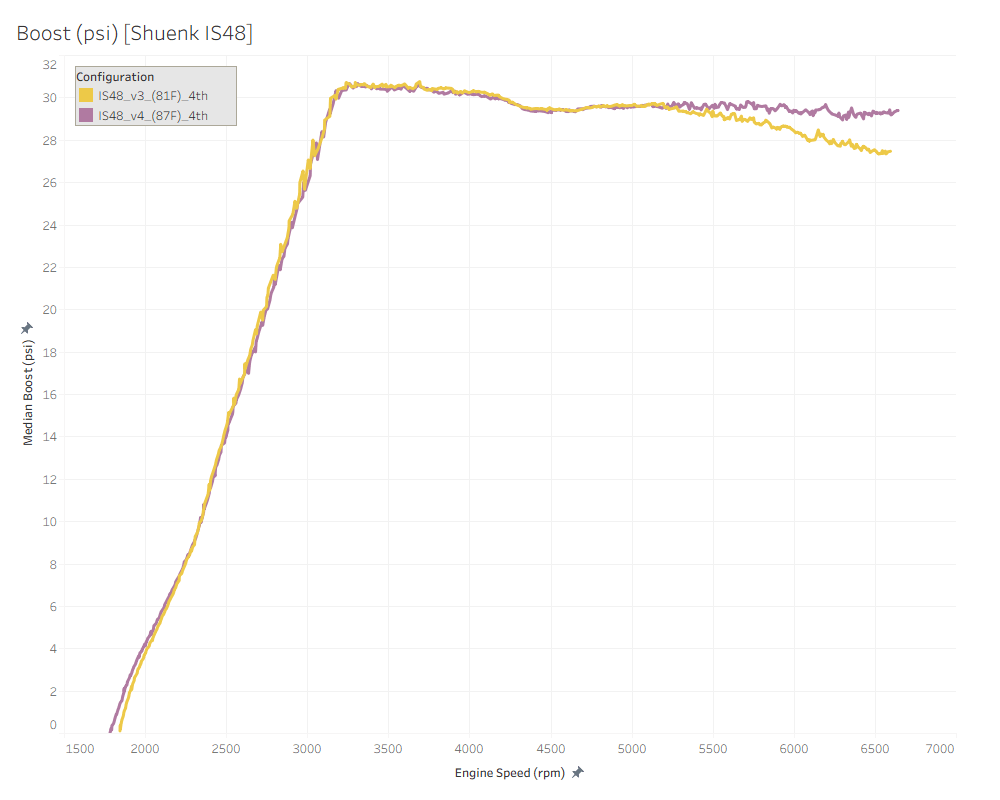
The WGDC peaked very close to the predicted value of 85%.
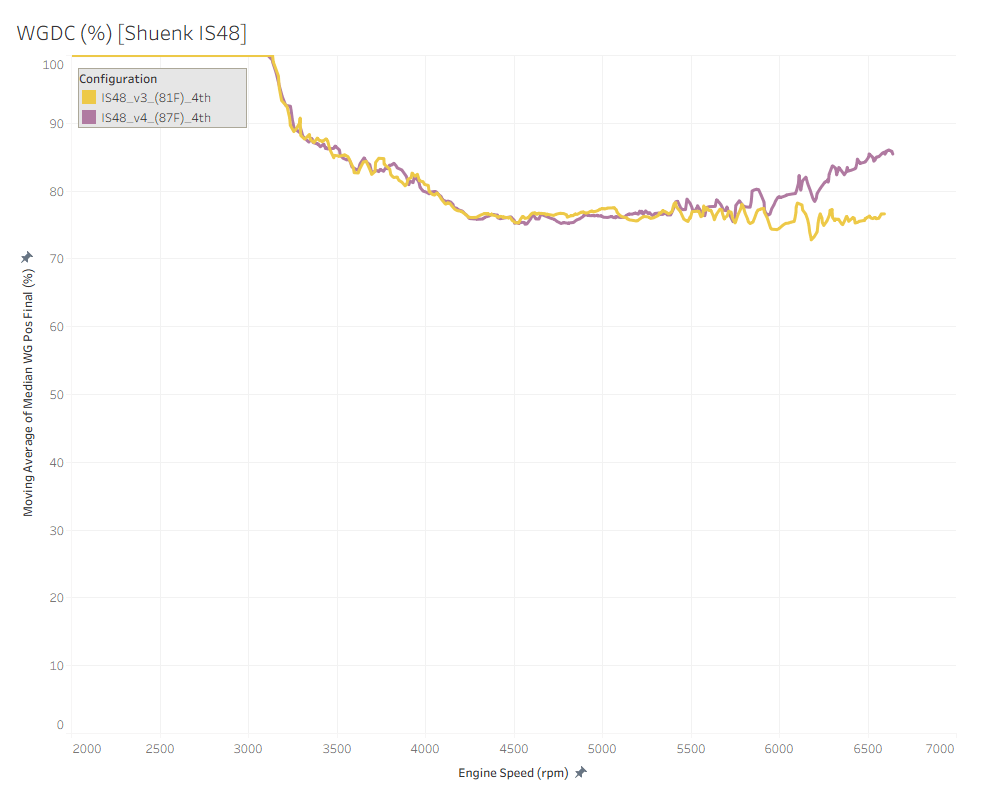
Adding this new data point shows the correlation is still holding. This is an interesting trend if it holds, since the projected boost pressure when the WGDC maxes is slightly greater than 32 psi.
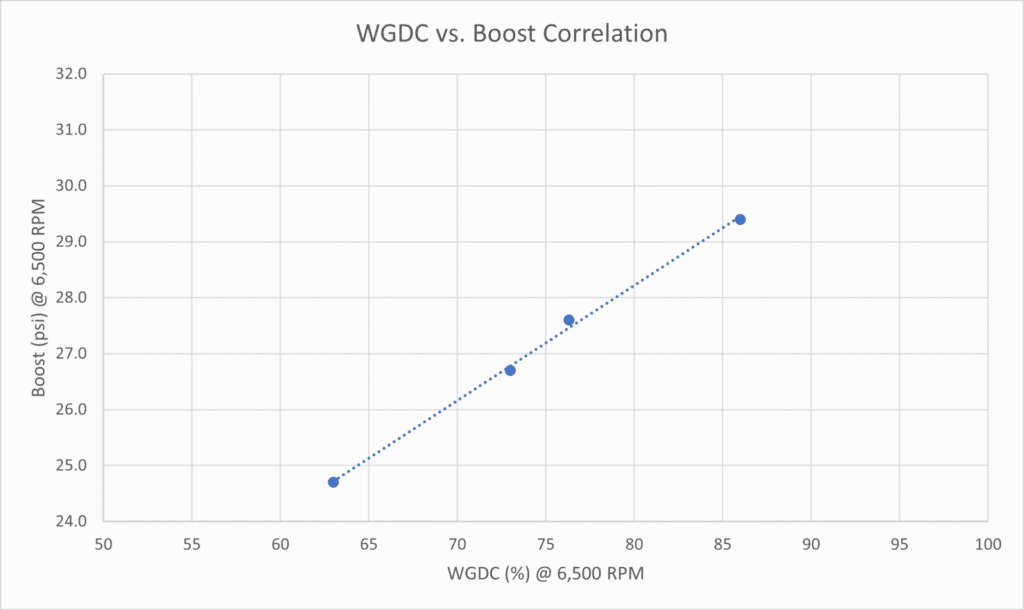
Acceleration with this higher boost pressure remains mostly unchanged from the previous revision, which was also not substantially different from the tune revision before that.
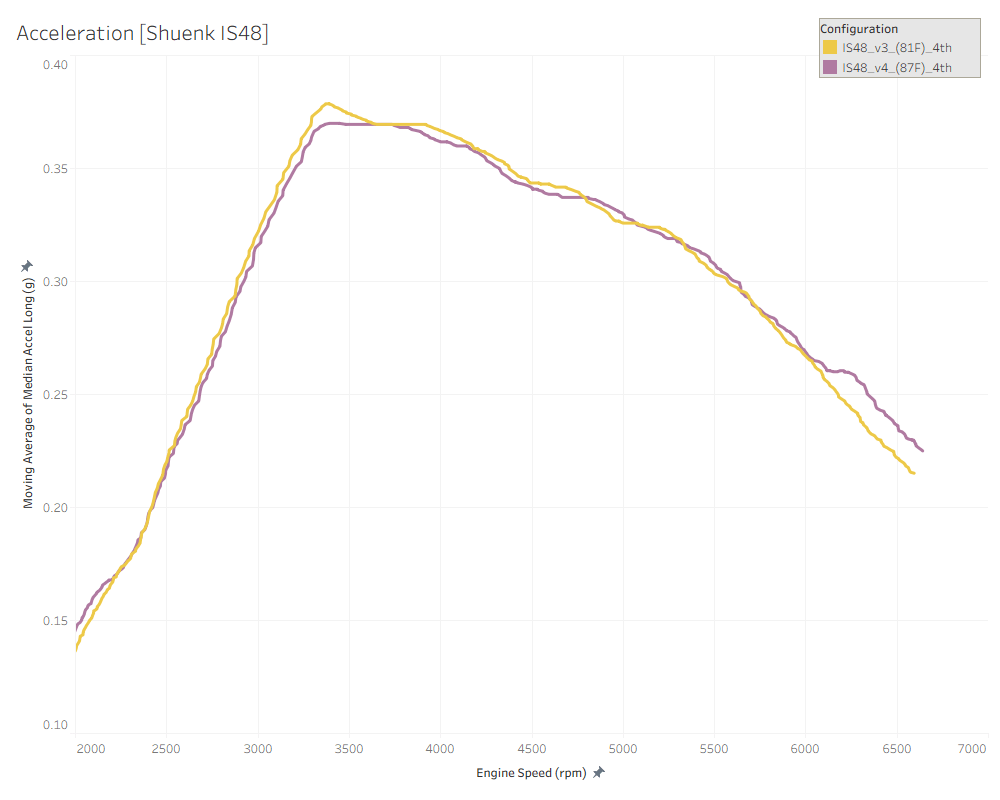
There is a slight increase in acceleration towards the end, but given that this is a comparison of single pulls, I cannot rule out the difference being run-to-run variation.
Virtual Dyno shows similar results, with peak power output being approximately the same; the higher boost tune holds a few more WHP past the point of peak horsepower.
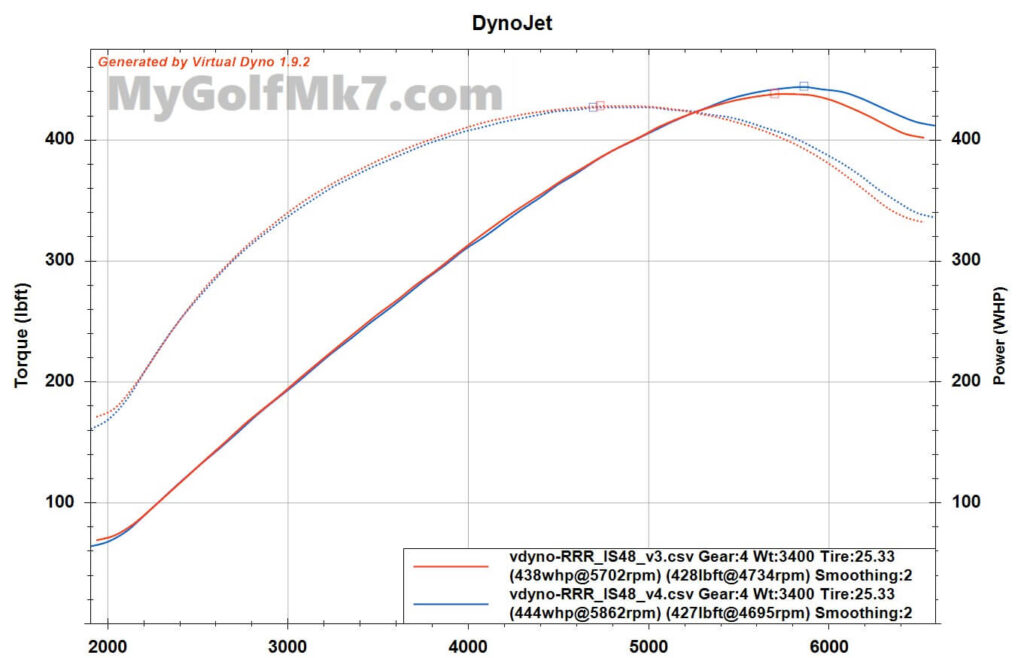
| Revision | Peak WHP |
|---|---|
| v2 | 440 |
| v3 | 438 |
| v4 | 444 |
The Shuenk IS48 compressor is based on the design of the Audi B9 S4/S5 turbocharger, and its dimensions are similar to those of the Garrett G25-550 compressor. Notably, the IS48 is a 7+7 design, where 7 full blades are supplemented with 7 splitter blades, whereas the Garrett uses 9 full blades.
To obtain an approximate idea of where the IS48 is operating in terms of compressor efficiency and speed, the G25-550 Map is used to plot airflow and pressure ratio.
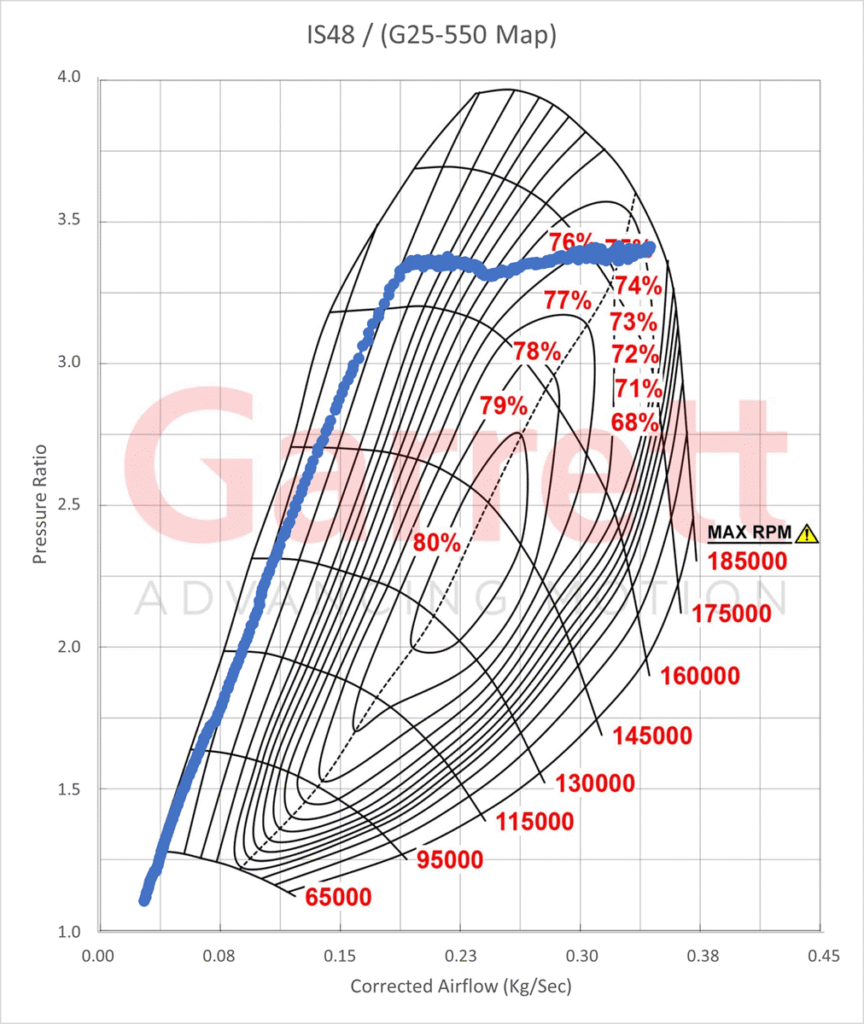
Importantly, several critical assumptions are being made, most of which will have some error.
The airflow rate is a modeled value, and since the IS48 is operating beyond the normal range of the GTI turbo, the value is likely to have a significant deviation from the actual value.
The pressure ratio is a function of the pressure (vacuum) at the compressor inlet and the pressure at the compressor outlet. Neither value is measured directly. The vacuum at the inlet is estimated, assuming an increasing pressure loss through the intake; however, this estimate has low confidence, although it is probably ‘in the ballpark.’
The boost pressure measured at the intake manifold is used to represent the pressure at the compressor outlet; however, this is not entirely accurate, as there are pressure losses between the compressor outlet and the MAP sensor. A fixed pressure drop of 1.5 psi is assumed; however, this value will be lower at lower flow rates and may be higher than estimated.
Using the data to form a rough estimate suggests that the IS48 is approaching the maximum operating speed of the G25-550 under the test conditions.
It would be interesting to see how the turbocharger performs at a more boost-favorable temperature, such as around 50 degrees Fahrenheit, and compare that to the 87°F data.
Conclusions:
The Shuenk IS48 was operated with an ECU tune that pushed the wastegate duty cycle to approach a maximum value.
It was found that with an 85% WGDC, the turbocharger supported a boost pressure of 29.5 psi at 6,700 RPM in an ambient temperature of 87°F.
Next:
Determining a reasonable maximum power for the current setup.
